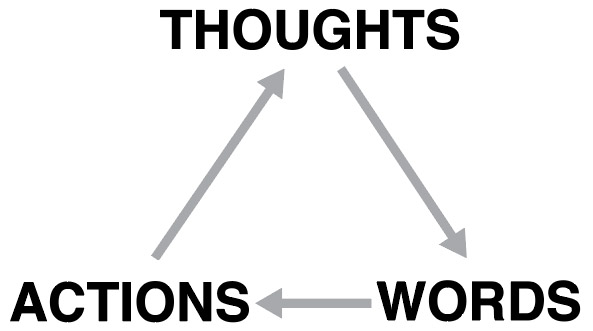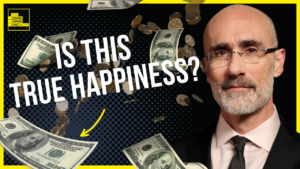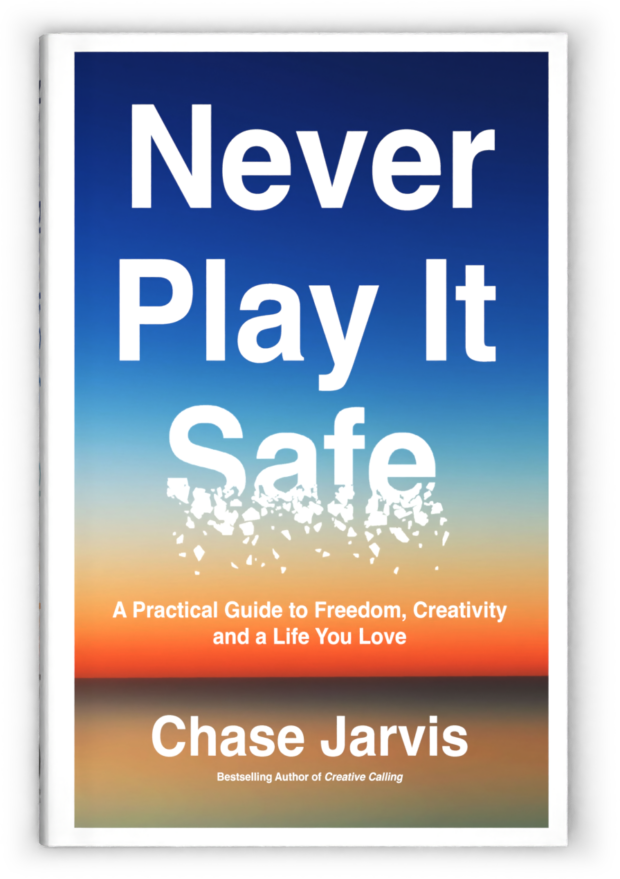
Happiness is not an accident. It’s not a state that randomly occurs when the stars align, nor a coincidence or a lucky windfall like buying a winning lottery ticket. In fact, there’s nothing random at all about happiness: it’s the natural product of our choices– small choices that all of us make every minute of every hour of every day.
Yes, there are many things in life that we have little or no control over, and these may be non-trivial things like natural disasters or health crises that bring real pain, discomfort and stress. Nobody – not even the wealthiest or most culturally-speaking “powerful” among us – can control the whims of fate– but what we can control is how we react to what comes our way.
I’ve always been a relentless optimist- partly because it’s my nature, but also because I make a conscious and continuous effort to maintain positivity as a core personal trait because – put bluntly – it serves my life and the life of those around me the best. As such, I’d like to put forth the pragmatic approach that’s worked for me – a simple approach built on the choice to be positive.
What is positivity?
I’ll start by – ironically – telling you what positivity is not (to correct some of the common misperceptions): it’s NOT blind optimism, being a pollyanna who glosses over the facts or burying your head in the sand. And it’s not posting corny platitudes on Instagram as though that’s going to magically make everything OK.
A simple definition of positivity is choosing to focus on the good in any given situation. To allocate more energy toward the opportunities and upside than the challenges and downside. Seeing the glass as half full. It’s approaching life with the assumption that everything is possible, that we can all live up to our fullest potential.
In parallel, it’s important to understand why negativity must be not just discouraged but aggressively stamped out.
Negativity is a slippery slope
It’s a fact of human cognition that our mind is wired to emphasize negativity, commonly accepted as a survival mechanism– it makes sense that our brains would prioritize information about, say, a potentially life-threatening predator. And this may have been an asset in an earlier era of human development, and yet today, it’s by and large it’s a liability (unless for some reason you still need to worry about getting trampled by wooly mammoths).
There are no magic bullets in business, but the closest without a doubt is positive, resolute thinking
We all know it’s a bummer in life to get stuck around negative people – and it’s therefore quite easy to understand why negativity shouldn’t be your disposition of choice, but there are other perhaps even more practical reasons you might want to avoid negativity in your day to day:
- It’s literally poisonous! Negative thinking causes your body to produce stress hormones like cortisol which can cause higher blood pressure, immune system suppression, increased abdominal fat, and a host of other concerning health problems
- Negative thoughts are more likely to impair cognitive ability, memory and contribute to that all-too-familiar late morning/late afternoon slump that can kill productivity (often when we need our productivity the most)
- Any psychologist will tell you that negativity becomes a self-fulfilling prophecy. When you expect a negative outcome you act accordingly, which often creates that outcome and reinforces your negative thinking (“See? I told you it was going to turn out like this”) and turns into a powerful and negative feedback cycle
- Last but certainly not least, it’s contagious. When you are negative, it spreads to those around you (despite their best efforts to avoid getting infected). We’ve all experienced these people at school, in recreation, or in our workplace. Similar to the bad outcomes in the body correlated with negative states of mind (like cortisol levels), a toxic person at work is a drain on the culture of that workplace
The point here isn’t to dwell on these outcomes, but simply to communicate the urgency of recognizing that negativity isn’t just “unpleasant” – it’s bad news for your body, mind and career.
Benefits of positivity
In my own career as a lifelong professional photographer/director and now as the CEO of a venture-backed startup, positivity has long been my secret weapon. There are no magic bullets in business, but the closest without a doubt is positive, resolute thinking. Not only is there limitless upside to orienting toward it, but positivity carries with it essentially zero downside.
Think about the kindest people you’ve ever met. Positive or negative disposition?
Think about the most successful people you’ve ever met. Positive or negative disposition?
Think about the people who have made the world a better place. Positive or negative disposition?
You get the picture. And here’s a few more practical applications we know to be correlated with positivity:
It’s your best tool for persuasion, for getting others to buy in to your vision.
Positivity is contagious: when you’re stoked and full of energy for the potential upside, your team/client/etc will be too (which in turn means you’ll have the freedom to do your best work).
Positivity empowers you to take calculated risks. This is hugely important because for many of us, the biggest barrier between ourselves and our goals is (drum roll)… ourselves: our own fear, uncertainty and self-doubt.
In all of these cases – the far off “heroes” we see in the world AND our best experiences of ourselves – I’ll place a huge bet that positivity is a big part of the equation.
Again, positivity isn’t ignoring the real obstacles that may be present, it’s a simple shift in your outlook that will fuel you to go over, around or through those obstacles. Instead of telling yourself “it can’t be done” or “this is way beyond me,” you’ll tell yourself “there’s gotta be a way to make this work– and I’m going to find it” and “I’ll use what I know and learn whatever I don’t.”

Putting this philosophy into action
If positivity doesn’t come naturally to you, don’t sweat it. As I said before, you’re fighting against biology to some extent so don’t beat yourself up. BUT as long as you’re willing to put in some work around a few basic techniques, you can train your brain just the same as you’d train your muscles in the gym.
This isn’t a metaphor or figurative language, it’s literally what happens at a neurological level: the more you use neural pathways, the stronger they become (for better or worse). Like starting a new sport, brain training may be tough at first – it may feel a bit forced and/or awkward – but as your brain gets in the groove it will get less and less difficult and eventually become second nature.
When you catch your thinking drifting toward the negative, make a conscious effort to correct course
Here’s a few concrete steps you can put into action immediately:
Surround yourself with positive people: Positive energy is contagious. The old saying that you are the average of the five people you spend the most time with is hard to deride – you become like those around you. As such, it’s better to use this dynamic to shape your thinking. If you’ve got negative people in your inner circle, I’d strongly advise editing them out.
Check your thinking: When you catch your thinking drifting toward the negative, make a conscious effort to correct course (refer to this list of common patterns of distorted thinking and see if you recognize them). Don’t complain or criticize. Frame things in terms of the upside. If you catch these words come out of your mouth, cut yourself off in mid-sentence if need be. “That’s not like me to think [X negative thought], next time I’ll focus on the positive.”
Say it out loud: Take a moment to vocalize your positive thoughts. This might feel a little goofy, but it’s incredibly effective. The reason is simple: by saying it out loud, you’ve made your thought real. It’s another impression on the brain. It’s external. You’ve turned it into sound waves, and that’s powerful. Thoughts become words become actions, and actions bring us closer to our goals.
Gratitude or meditation practice: This is perhaps the most highly publicized (and scientifically validated) practice in contemporary culture today – and for good reason: it works. The science is clear. The act of starting off each day expressing gratitude for at least 3 things in your life or meditating, can have a profound effect on mood, disposition, and our efficacy throughout the day. Among other things, these practices are the most common thread among the 200 billionaires, icons, and world-class performers featured in researcher + human guinea pig, Tim Ferriss’ most recent best-selling book book Tools of Titans. Also worth noting that I’m biased… because of the results. it’s been a key part of my routine for years (wherein I documented my approach on this site a few months back).
Closing thoughts
Happiness is largely the result of putting into action a deliberate system of habits and practices- and the benefits are persuasive evidence that putting effort into establishing such a system is well worth it.
We all bring different experiences and therefore different perspectives to the table, so my approach to happiness may or may not work for you. By no means am I suggesting that it’s a one-size-fits all formula– but what I am suggesting is that you get started with framing happiness and positivity as a key attribute to your life – in whatever formula that works for you.
Happiness isn’t random. Happiness is a choice. Choose wisely.
This post originally appeared on Virgin.com





















